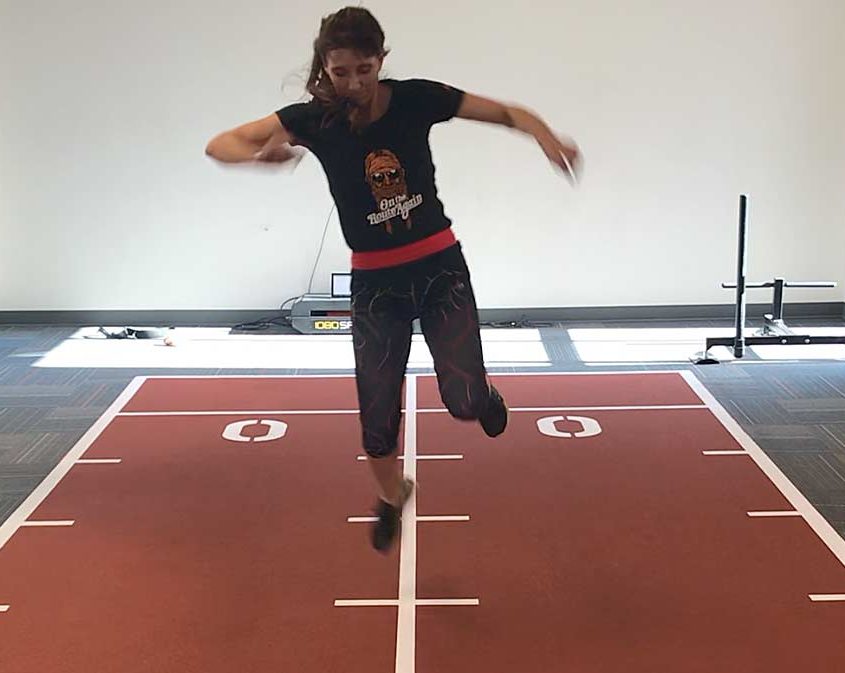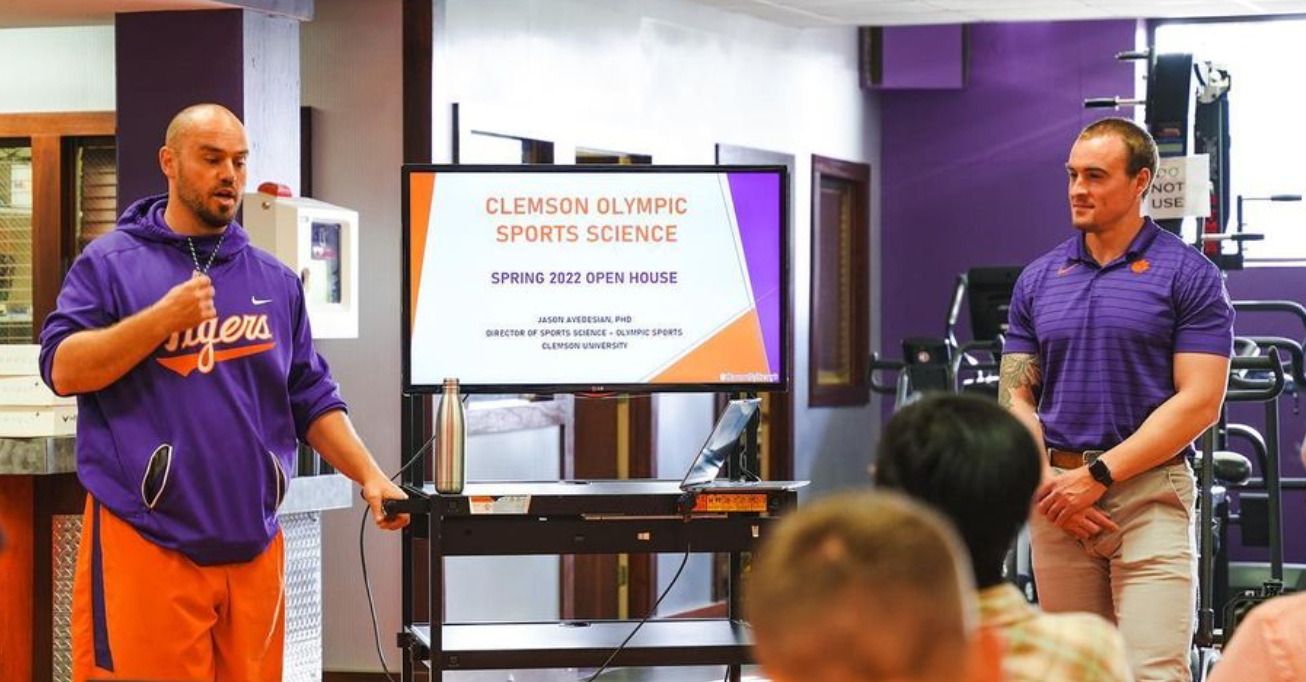In recent years, there has been a boom in sports science within university athletic programs. In some cases, it is the continual adoption and implementation of technology such as GPS, force plates, 1080 Motion, etc. to drive the testing, monitoring and training process by strength and conditioning coaches. And more frequently now is the hiring of a full-time sport scientist.
At Clemson, Rick Franzblau is that strength and conditioning coach who understands the value of the collection of actionable data to improve athlete development. Rick previously highlighted his use of the 1080 Sprint for creating load-velocity profiles and improving sprinting speed in baseball.
In November 2021, Rick brought Jason Avedesian, Ph.D on board as the Director of Sports Science for Olympic Sports. Within this role, Avedesian oversees all sports science initiatives across Clemson Olympic sports, including research and design, athlete monitoring, data analytics, and technology implementation.
Here’s a peek at what they are currently doing with the 1080 Sprint.
Sprint Load-Velocity Profiling and Individualization of the Training Prescription
During the off-season and/or pre-season, each athlete (across multiple Olympic sport teams, including baseball, soccer, softball, volleyball, lacrosse, and T&F) will perform a 30m all-out sprint protocol using the 1080 Sprint. This data is used to determine the force-velocity profile (FVP) characteristics based on the work from Samozino and Morin.
From here, individual training prescriptions are written taking into account these FVP characteristics along with athlete archetypes, which is a compilation of the following: bodily structure (wide or narrow infrasternal angle; pelvis:thorax ratio), force production, kinetics of hitting and throwing for baseball, skill level and role, etc.).
Besides considering how to develop and train individual aspects of body composition, mobility, strength, etc., Franzblau segments the speed and strength/power training for those into 2 general groups: those who need low speed / high force work, and those who need low loads at high speed.
In terms of results, Avedesian shared on example from the lacrosse team that showed a 3% average improvement in 30m sprint time from pre- to post-season.
An example force-velocity-power profile created for each of our athletes.
Data collected from a 30-meter run using @1080motion.
Thanks for @BVNiznansky for developing this visual! pic.twitter.com/41jmhGQlwB
— Jason Avedesian, PhD (@JasonAvedesian) July 24, 2023
The Hop Test, Acceleration-Deceleration Ability, and Return to Play
Since Avedesian’s arrival, Clemson Olympic sports have further refined some of the injury prevention and sports medicine-based assessments on the 1080 to make them scalable across all 16 Olympic sport teams. For example, the hop test is completed at baseline for all of the field-based sports. The hop test involves one or a series of tests on a single leg: single hop test, triple hop test, crossover hop test, or timed distance hop test. Clemson uses a 10-m timed hop test. Avedesian commented that “Traditional hop testing outcome metrics include only distance and/or time, but with the 1080 we are better able to quantify the strategy behind those outcomes with force production and power output. Plus, this provides a more detailed understanding of right-to-left limb asymmetries.”

Having these 1080 metrics on the hop test, along with the sprinting FVP, helps the strength & conditioning and sport science staff relay more objective information to clinicians (athletic trainers, physical therapists and sports medicine physicians), and also allows for a better understanding of how the athlete is progressing through the rehabilitation of a lower extremity injury. Avedesian adds “Having access to pre-injury data provides us a target to shoot for as athletes are progressing back to higher-velocity tasks.”
This summer Avedesian started pilot work on the Acceleration-Deceleration Ability (ADA) test. Although we all want to #MakeSpeedHappen, most athletes, besides track sprinters, need to put on the brakes. And this comes with high eccentric loads and an increased risk of injury. One of the top minds in deceleration, Dr. Damian Harper, along with our very own Dr. Ola Eriksrud have shown the utility of the deceleration and change of direction tests using the 1080 Sprint and spoken about it on these podcasts (click name above). We look forward to its implementation at Clemson.
Jason Avedesian, PhD is the Director of Sports Science – Olympic Sports at Clemson University, South Carolina, USA.






























































